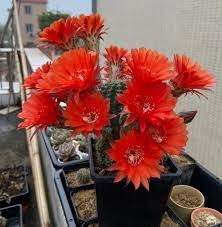
Feng Shui, an ancient Chinese philosophy, emphasizes the importance of balance and harmony between human beings and their environment. It is deeply rooted in the belief that the way we arrange and design our living spaces can have a profound effect on our health, wealth, relationships, and overall well-being. In the context of Chinese interior design, Feng Shui plays a critical role in creating spaces that not only look aesthetically pleasing but also promote positive energy, or Qi (also spelled Chi). This article will explore the principles of Feng Shui in Chinese home design, its key elements, and how to incorporate them into the interior spaces for a harmonious, balanced, and prosperous living environment.
1. The Basics of Feng Shui
Feng Shui, which literally means “wind and water,” is based on the belief that the flow of energy, or Qi, influences our lives. Qi is an invisible life force that exists in all things, and the goal of Feng Shui is to cultivate a flow of positive energy while minimizing negative energy. The layout and design of a home, according to Feng Shui principles, are seen as an essential factor in achieving harmony between the individual and their surroundings.
Feng Shui is built on several foundational concepts, such as the five elements, the Bagua map, and the importance of natural light and ventilation. These elements work together to determine the optimal arrangement of furniture, colors, materials, and objects within the home.
2. The Five Elements of Feng Shui
Central to Feng Shui design are the five elements—Wood, Fire, Earth, Metal, and Water—which are believed to influence various aspects of life. Each element is associated with specific colors, shapes, and materials, and understanding how to incorporate them into your home can enhance the energy of a space.
- Wood: Symbolizing growth, vitality, and renewal, the Wood element is represented by plants, wooden furniture, and the color green. It is associated with the family and health sectors of a home. Incorporating wooden furniture, leafy plants, or the color green can promote prosperity, vitality, and family harmony.
- Fire: The Fire element represents passion, energy, and motivation. It is associated with the fame and reputation area of a home and is represented by items such as candles, lamps, and objects in red, orange, or purple hues. To activate the Fire element, you can incorporate bright colors, lighting, and shapes that reflect this powerful energy.
- Earth: Earth represents stability, nourishment, and grounding. This element is best represented by earthy tones, clay pots, ceramics, and stone. The Earth element is associated with the relationships and center areas of a home. By introducing natural stone, earth-colored decor, or clay items, you can promote harmony and balance in relationships.
- Metal: Metal symbolizes clarity, precision, and strength. It is represented by metallic objects, such as sculptures, furniture, and accessories in shades of white, gray, or metallic colors. The Metal element is linked to the children’s and knowledge sectors. Incorporating metal objects or decorations can help foster clarity, mental focus, and creativity.
- Water: Water symbolizes abundance, wisdom, and serenity. It is represented by mirrors, fountains, and the colors blue or black. The Water element is especially important in the career and wealth sectors of a home. To enhance the flow of prosperity and career success, incorporating water features like indoor fountains, or using blue tones in design, can significantly improve the energy of these areas.
3. The Bagua Map: Guiding Energy Flow in Interior Design
The Bagua map is an essential tool in Feng Shui used to analyze and guide the energy flow within a space. The Bagua map divides a home into nine areas, each of which corresponds to a different aspect of life. These areas are as follows:
- Wealth and Prosperity (Southeast)
- Fame and Reputation (South)
- Love and Relationships (Southwest)
- Family and Health (East)
- Creativity and Children (West)
- Knowledge and Wisdom (Northeast)
- Career and Life Path (North)
- Helpful People and Travel (Northwest)
- Center (Health and Harmony)
Each area of the Bagua map corresponds to a different part of your life, and by placing certain elements or objects in the appropriate areas, you can enhance the specific energies linked to these life aspects. For example, placing crystals or plants in the wealth corner (Southeast) will help activate the energy for financial prosperity. Similarly, placing a pair of mandarin ducks in the love corner (Southwest) is believed to promote harmonious relationships.
4. Feng Shui in the Living Room: Creating a Harmonious Gathering Space
The living room is one of the most important areas in the home when it comes to Feng Shui. It is often the space where family and guests gather, and it serves as a reflection of the overall energy of the home. To create a balanced and harmonious living room, consider the following Feng Shui guidelines:
- Furniture Placement: The main seating area should be placed in the command position, where people can see the door but are not directly in line with it. This helps the residents feel empowered and in control of their environment. Avoid placing seating arrangements directly under beams or in front of sharp corners, as these can create Sha Qi (negative energy).
- Natural Light and Ventilation: Good air quality and natural light are crucial for a positive Feng Shui environment. Ensure that the living room is well-ventilated and allows natural light to flow freely. If natural light is limited, use warm lighting to brighten up the space and create a welcoming atmosphere.
- Use of Colors: The colors in your living room should reflect the desired energy you wish to cultivate. For example, earthy tones such as beige, brown, or terracotta are great for creating stability and harmony. To enhance creativity and social interactions, introduce splashes of bright colors like red or orange.
5. Feng Shui in the Bedroom: Promoting Rest and Intimacy
The bedroom is a sanctuary for rest, rejuvenation, and intimacy. In Feng Shui, it is essential to create an environment that promotes restful sleep and a healthy relationship. Here are some key principles to follow when designing your bedroom:
- Bed Placement: The bed should be placed in the command position, where you can see the door but are not directly in front of it. The bed should ideally be positioned against a solid wall for support, and it should be easily accessible on both sides. Avoid placing the bed directly under a window or in the direct line of the door, as this can disrupt the flow of Qi and affect your sleep.
- Color Choices: Soft, calming colors such as light blue, lavender, beige, or soft green promote relaxation and restful sleep. Red or bright colors should be avoided in the bedroom, as they are considered too stimulating and can disrupt the peaceful energy required for rest.
- Avoid Electronics: Minimize the presence of electronic devices such as televisions, computers, or phones in the bedroom. These devices can emit electromagnetic fields (EMFs) that disrupt the energy flow and interfere with sleep quality. If you must have electronics, keep them at a distance from the bed and turn them off when not in use.
6. Feng Shui in the Kitchen: Nourishing Health and Vitality
The kitchen is a vital area in Feng Shui, as it is associated with nourishment, health, and abundance. It is considered the “heart” of the home, where meals are prepared and shared. To optimize the energy of the kitchen, focus on the following aspects:
- Clutter-Free Spaces: Keep countertops and cabinets free of clutter to allow for the smooth flow of Qi. A clean, organized kitchen promotes good health and prosperity by ensuring that energy can circulate freely.
- Placement of Appliances: The stove, which represents the Fire element, should be placed in the command position in relation to the door, so the cook can see who enters the room. It is also important to ensure that the stove is in good working order and not surrounded by excessive moisture, as this can create an imbalance in the Fire and Water elements.
- Use of Colors: Incorporate a combination of warm colors such as yellow, orange, and red to promote vitality and energy. You can also introduce wooden elements to enhance the Wood element, which supports health and growth.
7. Feng Shui in the Office: Enhancing Productivity and Success
A well-designed home office is essential for productivity, creativity, and career advancement. Feng Shui can be applied to create a space that inspires focus and success:
- Desk Placement: The desk should be placed in the command position, where you have a clear view of the door but are not directly aligned with it. This position allows you to feel empowered and in control of your work. Avoid sitting with your back to the door, as this can create feelings of vulnerability and distraction.
- Lighting and Organization: Ensure that your office is well-lit with both natural and artificial light sources. Good lighting fosters focus and mental clarity. Keep your workspace organized to avoid feelings of overwhelm or stress.
- Symbolism for Success: Incorporate Feng Shui items like crystals, plants, or symbols of wealth to promote career success and financial prosperity.
8. Conclusion: Creating Balance and Harmony with Feng Shui
Feng Shui is more than just an aesthetic approach to interior design; it is a holistic system that considers how the environment influences our energy, health, and life experiences. By understanding the key principles of Feng Shui, such as the five elements, the Bagua map, and the importance of furniture placement and colors, you can create a home that supports your goals, promotes well-being, and invites prosperity into your life.
Whether you are redesigning a single room or transforming your entire home, incorporating Feng Shui principles into your living spaces can have a lasting impact on your overall quality of life. By aligning your environment with the natural flow of energy, you invite peace, harmony, and success into your
home and life.






